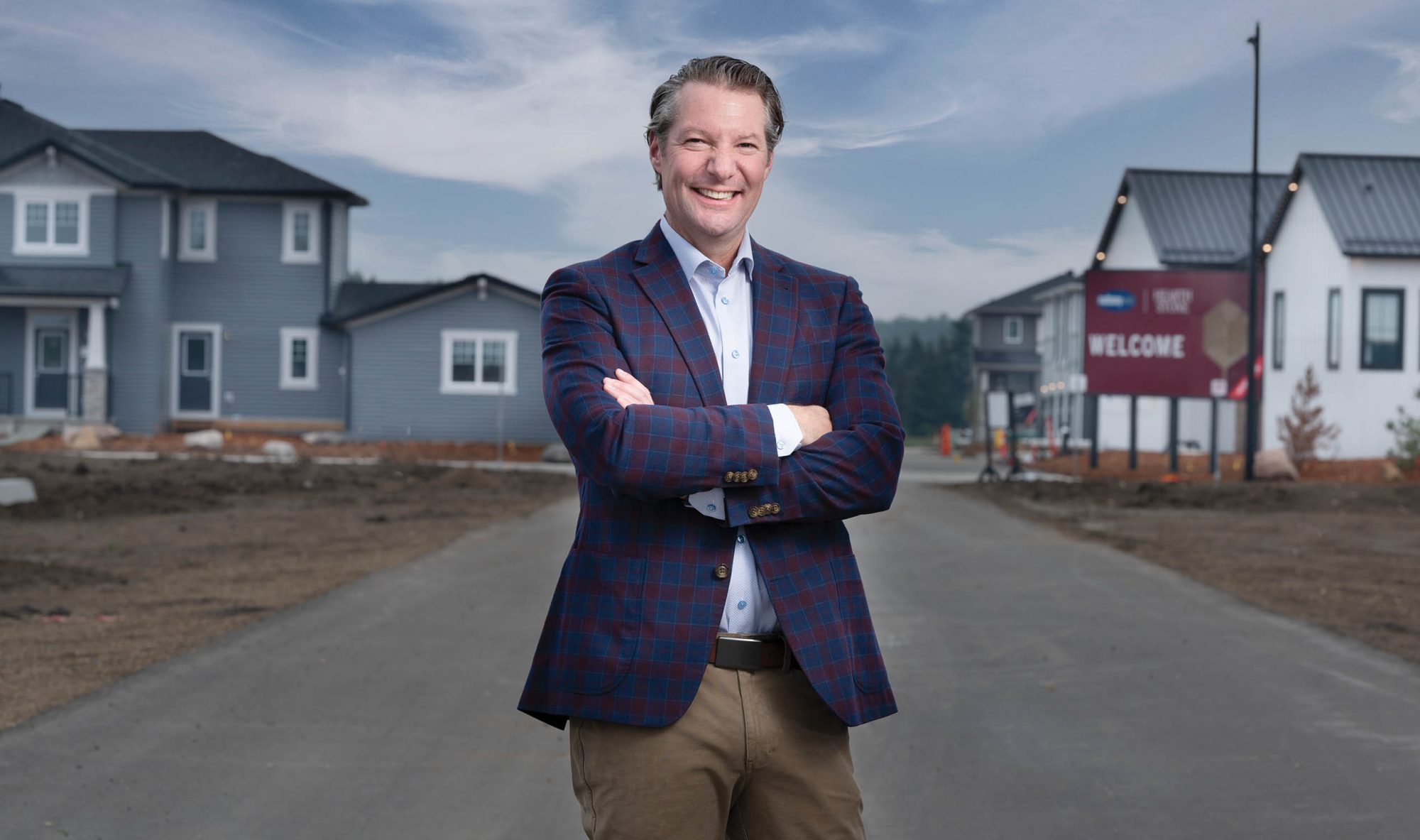When we think of young professionals or couples who don’t have kids, the stereotype is that they live in urban environments. They walk from their condos or row houses to buy single-serve-size items from the downtown grocery store. Their bikes patrol the streets of the core and Old Strathcona. When they’re not on bikes, they’re on scooters. They’re at the farmers’ markets on the weekends and meet friends for beer or cocktails in the evenings.
The single or DINK (dual income, no kids) demographic is growing in Canada. But, in terms of real estate, they’re not buying where the stereotype suggests. They’re finding value in Edmonton’s new neighbourhoods and the suburbs.
“What I can tell you for sure is that we’re seeing more single buyers and couples without kids,” says Collin Campbell, president of Mattamy Homes’ Alberta Division. “More and more are buying now than in the past years, by quite a bit. We’re seeing those trends in all our markets, too.”
Those spikes are seen in Mattamy communities currently being built in Sherwood Park and the Stillwater development, in southwest Edmonton between 199th Street and Winterburn Road.
So, why are the DINKs choosing to move outside of the Henday ring? While their wish lists may be a bit different than buyers who have families, the core demands are similar. They both want amenities close to their doors — and many of them can’t be found close at hand in more established, central neighbourhoods.
“We put a lot of emphasis on designing a complete community,” says Campbell. “That introduces many layers of amenities, with a huge focus on walkability and making the community more of a destination, creating the commercial, shopping and recreation spaces, so our homeowners don’t have to venture out to enjoy their preferred lifestyle.
“That’s a change from the past, when buyers without kids may have preferred to look at the inner city or downtown. The complete community is something you can get outside of the downtown core, now.”
